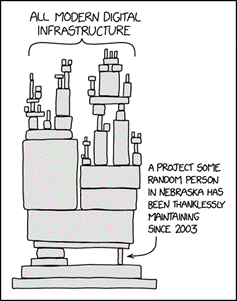Shift to Proactive Cybersecurity and Assurance
Envision a future where cybersecurity breaches are as archaic as floppy disks. In this envisioned digital landscape, enterprises are not merely reactive; they preemptively anticipate and neutralize threats with exacting precision. This proactive approach to cybersecurity is not merely aspirational—it’s a transformative strategy that is redefining the protocols of digital protection. This post delves into why adopting this forward-looking approach is imperative for contemporary businesses intent on safeguarding their digital frontiers.
Why reactive measures are falling short
The traditional reactive model of cybersecurity can be likened to patching leaks on a rapidly sinking vessel—it is both inefficient and belated. Such an approach often leaves enterprises in a precarious position, scrambling to manage crises reactively rather than preventing them proactively. The consequences are severe: substantial financial losses, diminished customer trust, and irreversible damage to brand reputation. In a landscape where cyber threats are increasingly sophisticated, maintaining a purely reactive stance is a risk no prudent business can afford.
The proactive cybersecurity advantage
Proactive cybersecurity transcends mere threat mitigation; it redefines the entire cybersecurity battleground. It mandates a strategic, informed, and anticipatory response to digital threats, shifting the focus from mere survival to comprehensive resilience.
The benefits of a proactive cybersecurity mindset include:
- Predict and mitigate: Utilizing state-of-the-art technologies such as artificial intelligence and machine learning, enterprises can forecast potential threats and formulate strategic defenses with enhanced efficacy.
- Cost efficiency: Preventative measures significantly reduce the financial burden associated with data breaches, not only in terms of direct costs but also in operational disruptions.
- Reputation integrity: A proactive approach signals to customers that their data is not only secure but valued, thereby reinforcing trust and loyalty.

Assurance services form the bedrock of a proactive cybersecurity strategy.
Assurance services: the proactive pillars
Risk Management and assurance equip businesses with the necessary intelligence and tools to transition from a passive defense to an active security force. The role of assurance services includes:
- Comprehensive Risk Management: Through meticulous assessments, enterprises can identify and prioritize both existing and emergent vulnerabilities.
- Strategic policy implementation: Policies and protocols are dynamically crafted and continuously refined in response to evolving threats.
- Empowered human element: A focus on training and awareness empowers employees to act as proactive agents in recognizing and addressing threats.
Securance's distinctive approach
At Securance, our role in the cybersecurity industry extends beyond participation—we aim to lead it. Our integrated approach of assurance and advisory services with cutting-edge cybersecurity solutions offers a holistic, proactive security strategy. We prepare businesses to confront and conquer future challenges, ensuring that cybersecurity measures advance in alignment with their strategic objectives.
A reactive to proactive cybersecurity approach is critical
The evolution from a reactive to a proactive approach in cybersecurity represents a critical shift in the way businesses protect their digital ecosystems. This proactive approach has transcended luxury to become a necessity in a domain where cyber threats continuously evolve. Committed to leading this shift, Securance offers strategies that not only defend but also empower businesses to innovate and grow securely.
Through fostering a culture of anticipation and prevention, Securance is redefining the standards in the cybersecurity field, ensuring our clients are not merely survivors but pioneers in the digital age.







